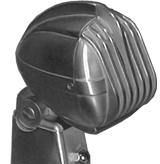
Turner S33D with EV 635a dynamic element
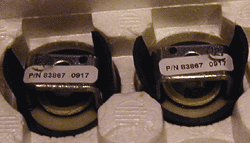
EV 635a elements
Microphone considerations for Amateur communications
Single Sideband and standard Amplitude Modulation
under construction
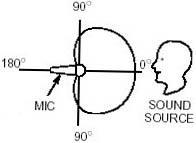
Cardioid Pattern
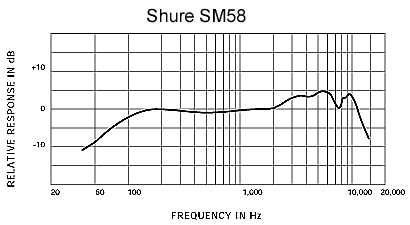
Frequency response
"This microphone produces fantastic detail and clarity, with a rich bass response, firm midrange, and sizziling high end - producing real DX punch ... "
And on and on and on goes the hyperbole. let's forget the bs and instead respect manufacturers who publish real, measured technical details about their products such as impedance, sensitivity, signal to noise, type of capsule employed, frequency response curves, and directional polar plots. These details begin to describe the essence of how the microphone will really perform in a specific application.
Amateur voice communication microphone requirements are pretty simple. Once we achieve a relatively modest level of mic quality, there is not much more to be gained for ssb voice reproduction. Let's begin by discussing basic capsule types.
Microphone evolution
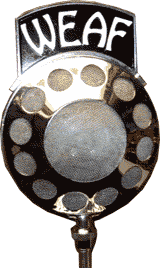 |
Carbon mics function as variable resistors, and are rarely used these days, due to the difficulty obtaining low distortion and uniform frequency response. In the early days they were convenient because of the power they could handle, which lowered the cost of amateur speech input stages, often reducing the tube count significantly. Broadcast stations left them behind 60 years ago. |
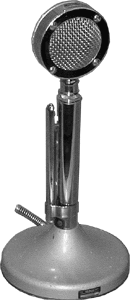 |
Crystal and ceramic capsules are the next step up in the evolutionary cycle. These actually generate their own voltage based upon piezoelectric properties of rochelle salts or quartz. Although significantly better than carbon in terms of frequency response and distortion, compared to modern mics, they still remain relatively low quality compared to dynamic or condenser technology. Virtually never seen in broadcast. |
 |
Ribbon microphones were introduced in the 30's, and were among the first high-fidelity transducers. Also called "velocity mics" - the active capsule consists of a very thin corrugated aluminum ribbon clamped under some tension and mounted between the poles of a strong magnet. It has a very low natural impedance, which is stepped up to a nominal 50-600 ohms using a built-in transformer. Even with the transformer the output is pretty low, requiring good shielding to keep hum and outher coupled noise to a minimum. It is also very fragile, vulnerable to p-pops, and has rather pronounced proximity effect. Rare in broadcast. |
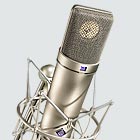 |
Condenser (capacitor) microphones were developed quite early, and were also capable of excellent fidelity, but required a significant bias supply - early units were bulky and somewhat complex. Modern versions have evolved into very fine microphones, exhibiting uniform frequency response and very low distortion. They still require a bias supply - usually 48 volts (often called "phantom power"). They are a bit fragile. The famous Neumann U87 is show at left, used fr broadcast. |
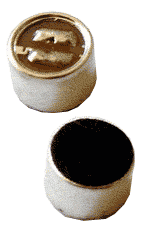 |
Electret elements are a simplified version of the condensor mic - having one side of the capacitor prepared with a (almost) permanent electrical charge, eliminating the need for an elaborate bias supply. However their relatively high impedance requires an internal FET preamp / source follower to lower the output impedance, which is often powered by 3-10 volts. These can offer low distortion and good frequency response, but are usually a bit limited in dynamic range - to about 62 dB from clip point to noise floor. For amateur radio, we don't need huge dynamic range - these can work pretty well, given the usual relatively noisy medium we work through - many manufacturer-supplied mics use this capsule, and most modern rigs provide the 3-10 volts on the mic connector. The elements themselves cost only a dollar or two. |
 |
Dynamic microphones are the true workhorses of professional sound, having very good performance in almost all departments, and are more rugged than condenser units. They are mid-priced and require no bias. With relatively large moving-coil diaphrams, they can supply high output. They are quite similar in construction to commonly used speakers, except having a lower mass diaphram. The one limitation is susceptability to magnetically-induced hum from nearby sources like lighting ballasts, power transformers, etc. This is not a big problem for for most amateur radio uses, but something keep in mind when tracking down hum issues. Some models use a separate "hum-bucker" coil identical to the moving coil, connected out-of-phase, and without a diaphram. This system is reasonably effective, but does not entirely eliminate the minor weakness. These are the workhorses in broadcast applications. |
I should also add that cardioid (directional) pattern shape is really only important when working a significant distance from your mouth. And, unless you like the echo chamber effect, this becomes practical only when the room is quiet and non-reflective, with a lot of soft sound-deadening material nearby. If your hamshack is like mine, that's just not practical, so an entirely different approach may be better.
Omni-directional microphones tend to maintain more uniform frequency response over a wider range of distance and angle. But you must stay close to them if the echo chamber effect is to be avoided. I have aquired an antique Turner S-33 art-deco style microphone, mounted it on an Astatic tug8 style stand, and replaced the internal mike element with a standard Electro-Voice dynaminc omni element from an EV 635A microphone - the general purpose broadcast standard for doing news-gathering-type inteviews with a handheld mic. These elements are available from EV for $44, and have the professional type balanced low-impedance output. These are shown below. As long as the microphone is worked very close - less than 2 inches - it sounds very good with minimum background noise.
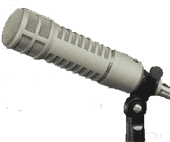
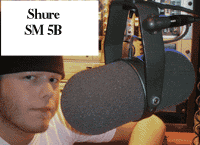
Just
because this shure mic looks conventional and costs just $99, don't
sell it short. Its balanced, low-impedance dynamic, cardioid,
and optimized for voice intelligibility - somewhat rolled bass and
a presence peak at 3 khz - just right for ssb. If you want the "hi-fi" sound
with more natural bass, you might reduce the presence peak a little
with the EQ - out of the box it will be boosted about 10 db. The only
real disadvantage, at least for me, is that the short stand promotes
relatively distant micing unless I lean into it.
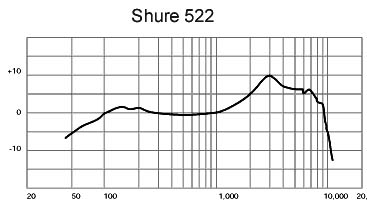
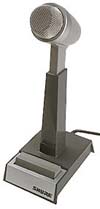
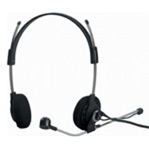 Perhaps
most ideal,
carrying this close-miking concept to its limit, the headphone / boom
mic is hard to beat. With really close micing ( 1/2 inch ), you don't
have to be concerned much about blower noise or room acoustics. An
additional benefit is position remains unchanged as you move your head.
The challenge is to find a mic with uniform frequency response - many
are pretty poor. Shown is
a Shure 512 - a good dynamic mic.
Perhaps
most ideal,
carrying this close-miking concept to its limit, the headphone / boom
mic is hard to beat. With really close micing ( 1/2 inch ), you don't
have to be concerned much about blower noise or room acoustics. An
additional benefit is position remains unchanged as you move your head.
The challenge is to find a mic with uniform frequency response - many
are pretty poor. Shown is
a Shure 512 - a good dynamic mic.